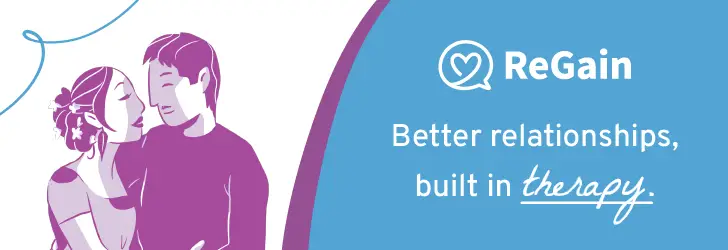As a BetterHelp affiliate, we receive compensation from BetterHelp if you purchase products or services through the links provided
Solution-focused therapy offers a unique and practical approach to addressing relationship issues and promoting healthy communication within couples. This method emphasizes finding solutions to existing problems rather than focusing on the cause or nature of the problems themselves. By utilizing a more positive and future-oriented perspective, couples can work together to identify their strengths and resources and make meaningful changes in their relationships.
Incorporating solution-focused techniques during couples therapy sessions helps address specific concerns and fosters a sense of empowerment and resilience within the partnership. This therapeutic approach enables couples to understand better their roles and responsibilities in nurturing their relationship. These insights often lead to increased satisfaction and overall improvement in relationship dynamics.
Key Takeaways
- Solution-focused therapy emphasizes finding solutions rather than focusing on problems.
- This approach promotes healthy communication and empowers couples to make changes.
- Utilizing solution-focused techniques fosters resilience and enhances relationship satisfaction.

What is Solution Focused Therapy for Couples
Solution-focused therapy (SFT) is a therapeutic approach that focuses on identifying and working towards solutions rather than dwelling on problems. In the context of couples therapy, SFT helps partners recognize and build on their strengths, resources, and successes to improve their relationships.
Couples experiencing relationship issues may feel discouraged and overwhelmed by their problems. Solution-focused therapy offers a different perspective by prioritizing the couple’s goals and collaboratively exploring possible solutions. This approach fosters a sense of empowerment and confidence in their ability to tackle obstacles together.
The primary techniques used in solution-focused couples therapy include setting specific goals, exploring exceptions, and utilizing scaling questions to gauge progress. Therapists work with couples to create realistic goals and identify past successes as a foundation for future growth. By highlighting strengths and exceptions to their problems, couples can see that they can overcome challenges.
Solution-focused therapy is particularly well-suited for couples open to change and looking for a positive, goal-oriented approach to improving their relationship. This therapy method encourages clear communication, active listening, and collaboration, making it an effective choice for couples who want to build a stronger connection.
In summary, solution-focused therapy for couples is a beneficial method that emphasizes achievable solutions and promotes a positive outlook. Couples can work together to nurture a healthy, thriving relationship by focusing on their strengths and successes.
Basic Principles of Solution-Focused Therapy
Solution-focused therapy is a practical and goal-oriented therapeutic approach that emphasizes couples’ inherent strengths and resources in overcoming their relationship challenges. By focusing on solutions rather than dwelling on problems, this therapy helps couples to develop positive coping strategies and effectively address their relationship issues.
Several key principles guiding the therapeutic process are at the core of solution-focused therapy. Firstly, the therapist helps the couple identify and clarify their goals and collaboratively works with them to develop an action plan to achieve these goals. This involves asking solution-focused questions and encouraging the couple to recognize their strengths and abilities.
Another fundamental principle is the belief that all couples possess the necessary resources and skills to resolve their relationship problems. The therapist’s role is to help the couple access these resources and explore creative solutions to their challenges. This approach fosters a sense of empowerment and self-confidence, enabling couples to take charge of their healing process.
The therapy follows a brief and time-limited structure, typically lasting no longer than 12 weeks. This ensures that the focus remains on finding solutions efficiently rather than engaging in lengthy explorations of the past. The therapist continually tracks the couple’s progress and modifies the treatment approach based on the observed changes when necessary.
Lastly, one of the most important principles of solution-focused therapy is building a collaborative and trusting relationship between the therapist and the couple. By creating a safe and non-judgmental space, the therapist helps the couple feel comfortable openly discussing their concerns and jointly developing strategies to overcome their difficulties.
In conclusion, solution-focused therapy offers a powerful and efficient approach to helping couples resolve their relationship issues by emphasizing their innate strengths and resources. By adhering to the key principles of identifying goals, accessing internal resources, adopting a brief and time-limited structure, and building a strong therapeutic alliance, this therapeutic approach empowers couples to work together toward achieving a more satisfying and harmonious relationship.
Techniques in Solution Focused Therapy
Solution-focused therapy is an approach to couple’s therapy that aims to help clients focus on solutions rather than dwelling on problems. There are several techniques used in this therapeutic approach that can be instrumental in guiding couples toward the desired positive changes.
Miracle question is a popular technique in solution-focused therapy. Therapists use it to help clients visualize what their lives would look like if their problems were suddenly solved. By asking clients to imagine that they woke up one day and the issue was no longer present, they are encouraged to think about the positive aspects of their lives and gain insights into their desires and goals.
Scaling questions are another useful tool in this form of therapy. These questions help clients evaluate their situations on a scale from 0 to 10, where 0 represents the worst possible scenario, and 10 is the best. This helps clients identify their current position and the steps they can take to move closer to their desired outcome. It also serves as a way to track progress during the therapy process.
The solution-building process involves encouraging clients to focus on the improvements they can make rather than dwelling on the problems they face. This includes identifying the resources and strengths within the couple, such as effective communication, empathy, and perseverance. By fostering optimism and a problem-solving mindset, couples can build mutually satisfying solutions.
Solution talk is a technique that concentrates on discussing and exploring solutions rather than focusing on the issues. The therapist helps clients identify and discuss possible actions and changes they can make in their relationship. This conversation directly contributes to the solution-building process.
Coping questions can be especially helpful when clients are facing challenging situations or experiencing distress. These questions encourage clients to reflect on how they have managed to cope so far despite the problems they are dealing with. By understanding their coping mechanisms, clients can become more resilient and better handle future challenges that may arise in their relationships.
In conclusion, the techniques used in solution-focused therapy empower couples to take an active role in improving their relationships by shifting their focus from problems to solutions. Therapists can guide clients toward more fulfilling and harmonious partnerships by using the miracle question, scaling questions, solution building, solution talk, and coping questions.

The Role of the Therapist in Solution Focused Therapy
In solution-focused therapy for couples, the therapist plays an essential role. Acting as a guide, the therapist assists both partners in identifying their strengths and working collaboratively to develop practical, solution-focused goals. A neutral and empathetic approach is crucial for the therapist to maintain an unbiased and supportive environment.
The therapist’s primary responsibility is to encourage open communication between the couple. Through active listening and asking thought-provoking questions, the therapist helps the clients explore their perspectives and understand each other’s needs. The therapist fosters a positive atmosphere by highlighting the couple’s individual and relational strengths, reinforcing their resolve to overcome challenges together.
Another vital aspect of a therapist’s role in solution-focused therapy is fostering hope and resilience within the couple. The therapist works to reframe problems as opportunities for growth and helps clients identify potential solutions that align with their values. By offering guidance and showing empathy, the therapist instills hope and a sense of self-efficacy in the clients, empowering them to make meaningful changes.
In addition to these primary roles, a therapist in solution-focused therapy must possess several key qualities and skills. The therapist should be knowledgeable in various therapeutic techniques and proficient in their application. They must also demonstrate flexibility and adaptability, tailoring their approach to suit each couple’s needs.
Furthermore, skilled therapist effectively balances their role in guiding the therapy while allowing the clients to take ownership of their progress. This collaborative approach cultivates an environment of mutual respect and fosters a sense of trust, ultimately promoting healthy communication and positive change within the relationship.
In summary, the therapist plays a vital role in solution-focused therapy for couples. Creating a supportive and empathetic environment, they help clients identify their strengths, explore solutions, and foster hope for a brighter future together. The therapist’s skilled guidance and expertise are essential tools that empower clients to work collaboratively and enhance their relationships.
Research and Empirical Studies on Solution Focused Therapy
Numerous empirical studies have been conducted on solution-focused therapy (SFT) to assess its effectiveness with couples. The majority of these studies have yielded promising results, supporting the efficacy of SFT in improving relationship satisfaction, communication, and overall functioning.
For example, a study conducted by Gingerich and Eisengart (2000) reviewed 15 controlled studies on SFT and found that the therapy demonstrated significant improvements in clients’ well-being with effect sizes on par with other established therapies. These positive outcomes were maintained during follow-up, indicating long-term effectiveness.
Another study by Carr (2011) evaluated the effectiveness of SFT in treating relationship distress, an essential factor in couples therapy. By comparing SFT to other evidence-based approaches, the study found that SFT was equally effective at reducing relationship distress and enhancing communication skills.
Research has also demonstrated SFT’s potential to work with diverse populations and issues. A study by García, Álvarez, and Martín-Rodríguez (2018) explored the effectiveness of SFT with couples from different cultural backgrounds, including European, Asian, and African countries. The results showed that SFT significantly improved marital satisfaction, regardless of cultural background.
Empirical evidence suggests that SFT can be flexible and cater to individual couples’ needs. For instance, Fraenkel and Cho (2014) study examined SFT in the context of infidelity. The study found that SFT, when adapted for this specific issue, effectively helped couples rebuild trust and alleviate the emotional pain resulting from infidelity.
In conclusion, research and empirical studies support solution-focused therapy for couples. SFT effectively enhances relationship satisfaction, fosters improved communication and addresses various relationship issues. Thus, SFT is a valuable therapeutic option for couples seeking professional support for their relationship.

Solution Focused Therapy in Handling Couple Issues
Solution-focused therapy (SFT) is an effective approach for couples facing various relationship issues. It helps partners understand each other better, enhancing their communication skills and promoting mutual empathy. This therapy mainly focuses on finding solutions in the present and concentrating on future goals rather than dwelling on past problems.
In situations with high levels of conflict or distress, solution-focused therapy enables couples to identify their strengths and resources, resulting in effective conflict resolution strategies. Focusing on the positive aspects helps them develop an optimistic outlook and resolves disagreements without escalating emotions.
Infidelity can significantly challenge couples, leading to emotional pain and distrust. SFT encourages partners to work together to rebuild trust and mend the relationship. The couple can gradually restore attachment and promote emotional healing by setting achievable goals.
For some couples, separation or divorce might be a possible outcome. In these cases, solution-focused therapy assists partners in reaching an amicable and respectful conclusion. The therapy allows a smoother transition during this difficult time by encouraging clear communication and mutual understanding.
Solution-focused therapy addresses various issues in a couple’s relationship, such as communication, conflict, distress, communication skills, conflict resolution, infidelity, attachment, separation, and divorce. SFT offers valuable guidance for couples to overcome challenges and move forward by adopting a confident, knowledgeable, neutral, and clear approach.
Utilization of Solution Focused Therapy in Other Family Settings
Initially designed for couples, solution-focused therapy (SFT) can also be effectively applied in different family settings. SFT aims to foster collaborative decision-making among family members, recognizing the importance of open communication and positive relationship-building.
In families with children, SFT can help promote healthy communication patterns and mutual respect between parents and children. It encourages the family to share and discuss their individual and collective strengths, enabling them to focus on solutions rather than dwelling on problems.
For families experiencing external stressors, such as financial issues or health concerns, SFT provides a supportive environment for addressing these challenges. The therapy builds resilience and empowers families to manage stress by eliciting positive coping skills.
Additionally, SFT can benefit families undergoing major life transitions, such as merging families in a remarriage, adapting to cultural or environmental changes, or dealing with the losses of loved ones. In such cases, the therapy helps family members to navigate these adjustments effectively while maintaining a sense of unity and emotional well-being.
The application of Solution Focused Therapy in various family settings highlights its adaptability and efficacy in promoting positive outcomes. Its emphasis on recognizing and leveraging strengths, resources, and resilience enables families to work together toward nurturing supportive and enduring relationships.
Incorporating Solution Focused Therapy in Dealing with Mental Health Issues
Solution-focused therapy (SFT) can be effective for couples dealing with mental health issues such as depression, anxiety, PTSD, eating disorders, and trauma. This therapy focuses on the couple’s strengths and resources, encouraging them to envision their desired future together.
Depression and anxiety often stem from negative thought patterns and a focus on problems. SFT can help couples shift their focus towards solutions and positive outcomes. Couples can build on their successes by concentrating on what works and learn practical skills for managing these conditions together. Creating a shared vision of the future can help alleviate symptoms of depression and anxiety, promoting a more balanced mental state for both partners.
In cases of PTSD and trauma, SFT works by helping couples identify and utilize their strengths to overcome triggers and flashbacks. This approach emphasizes the importance of communication and support, enabling those affected to confront their traumatic experiences within a nurturing environment. SFT allows couples to collaboratively establish coping mechanisms while fostering resilience and healing for both individuals.
Eating disorders, like other mental health issues, can significantly impact relationships. SFT helps couples address these challenges by shifting their focus from the problem to the solution. Identifying positive behaviors, setting goals, and developing a supportive network can be crucial in overcoming eating disorders together.
Solution-focused therapy can be a valuable tool for couples navigating mental health issues. By promoting a shift in focus from problems to solutions, SFT provides an empowering, action-oriented approach to therapy that encourages growth and lasting change.
Notable Books and Authors on Solution Focused Therapy
Solution-Focused Therapy with Couples by Barry L. Duncan, MFT, and Scott D. Miller, Ph.D., is a groundbreaking book that explores the solution-focused approach to couples therapy. The authors experienced clinicians and trainers, offer practical techniques for supporting couples in finding solutions to their problems. This book is helpful to both new and experienced therapists looking to enhance their skills in solution-focused therapy.
Another influential book is Doing What Works in Brief Therapy: A Strategic Solution-Focused Approach by Ellen K. Quick, Ph.D. In this book, Quick presents a comprehensive guide to the principles and practices of solution-focused therapy. By providing clear explanations and examples from her clinical practice, Quick helps clinicians learn how to apply the techniques to various clients and situations.
Another noteworthy book is solution-Focused Brief Therapy: A Handbook of Evidence-Based Practice, edited by Cynthia Franklin, Ph.D., Terry S. Trepper, Ph.D., and Eric E. McCollum, Ph.D.. This handbook consists of chapters written by expert contributors, making it an excellent resource for researchers and practitioners who want to study the evidence behind solution-focused therapy. From outlining its theoretical foundations to offering advanced techniques, this book is essential for anyone interested in solution-focused therapy.
In addition to these books, it is necessary to mention the work of the pioneers in the field, Steve de Shazer and Insoo Kim Berg. They collaborated on various books and research articles that have influenced the development of solution-focused therapy. Some of their notable titles include Clues: Investigating Solutions in Brief Therapy and The Miracle Method: A Radically New Approach to Problem Drinking. Their collaboration has laid the foundation for solution-focused therapy’s growth and its integration into modern clinical practice.
To conclude, these books and authors have significantly contributed to the theory and practice of solution-focused therapy. From the initial work of Steve de Shazer and Insoo Kim Berg to the more recent publications of other clinicians and researchers, these resources have provided invaluable insights for therapists looking to enhance their skills in this therapeutic approach.

Conclusion
Solution-focused therapy for couples fosters an emotional bond between partners by emphasizing their strengths and abilities. This approach reinforces positive behaviors and encourages collaboration to find solutions to any issues rather than dwelling on problems.
In a neutral, goal-oriented setting, the therapist facilitates constructive communication while highlighting the couple’s resources and resilience. Confidence in each partner’s ability to grow and adapt contributes to the overall success of therapy. By recognizing and celebrating small changes, couples enhance their connection and improve their relationship.
Solution-focused therapy empowers couples to navigate challenges, build stronger emotional bonds, and achieve positive outcomes. With this approach, couples can experience mutual growth and deepened intimacy, forming the foundation for a healthier, more satisfying relationship.
Frequently Asked Questions
What are the key techniques in solution-focused couples therapy?
Solution-focused couples therapy focuses on identifying and amplifying the positive aspects of a relationship and finding workable solutions to problems. Key techniques include:
- Setting clear, achievable goals for the relationship
- Identifying strengths and successes in the relationship
- Exploring exceptions to problems
- Scaling questions to measure progress
- Utilizing externalizing conversations to depersonalize issues
How does solution-focused therapy improve communication in relationships?
Solution-focused therapy fosters a more constructive and collaborative communication style by emphasizing the positive aspects of the relationship and encouraging couples to identify their strengths. This approach allows partners to discuss their problems openly and respectfully as they work toward finding practical solutions together.
What are the success rates for couples using solution-focused therapy?
While individual success rates may vary, studies have shown that solution-focused couples therapy positively impacts relationship satisfaction and communication improvements. Research has also found that couples participating in this therapy often experience long-lasting positive relationship changes.
How long does solution-focused couples therapy typically last?
Solution-focused couples therapy tends to be a brief and goal-oriented form of therapy. The duration varies depending on the couple’s needs and progress but ranges from a few sessions to several months. The frequency and length of sessions can also be tailored to suit the couple’s needs and preferences.
How does solution-focused therapy differ from traditional couples therapy?
The primary difference between solution-focused and traditional couples therapy is focusing on the couple’s strengths and solution-oriented techniques. While traditional therapy may focus more on exploring the underlying causes of relationship problems, solution-focused therapy aims to build on existing strengths and prioritize finding workable solutions quickly.
Who are the main proponents and developers of solution-focused couples therapy?
The main developers of solution-focused therapy are Steve de Shazer and Insoo Kim Berg, who founded the therapy at the Brief Family Therapy Center in Milwaukee, Wisconsin. Other prominent figures in the field include Bill O’Hanlon, Michelle Weiner-Davis, and Yvonne Dolan. Numerous therapists and researchers have since contributed to developing and refining solution-focused couples therapy models and techniques.
- How to Transform a Home’s Patio Space into a Relaxing Space - March 23, 2025
- 5 Strategies to Use a Cell Phone to Help Manage Your Stress - March 23, 2025
- 4 Ways to Use Measurements to Create a Relaxing Sleep Space - March 23, 2025
This site contains affiliate links to products. We will receive a commission for purchases made through these links.





